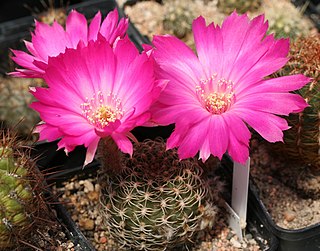
Lobivia backebergii is a species of flowering plant in the cactus family Cactaceae, native to eastern Bolivia and southern Peru.

Acanthocalycium thionanthum is a species of Acanthocalycium from Argentina.

Oreocereus trollii, commonly known as the Old Man of the Andes cactus, is a species of cacti native to Argentina and Bolivia. Though listed as Least Concern by the IUCN, the plant is collected extensively, and in some areas is threatened.

Soehrensia formosa, is a species of Echinopsis found in South America. In north-western Argentina, Bolivia and northern Chile. First published in Cactac.: Handb. Kakteenk. 3: 1678 in 1959.

Echinopsis aurea, is a species of Echinopsis found in Argentina.
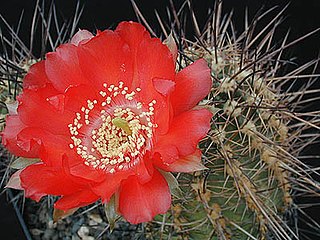
Echinopsis haematantha, is a species of Echinopsis found in Argentina and Bolivia.

Lobivia ferox, is a species of Lobivia found in Bolivia and Argentina.

Lobivia obrepanda, is a species of Lobivia found in Bolivia.

Soehrensia huascha, is a species of Soehrensia in the Cactaceae family, found in north western Argentina. First published in Cactaceae Syst. Init. 29: 5 in 2013.
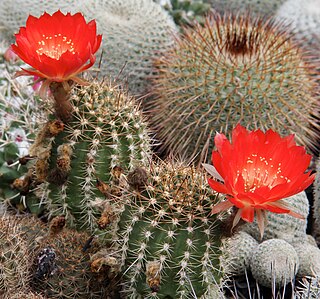
Lobivia hertrichiana is a species of Lobivia found in Bolivia and Peru.
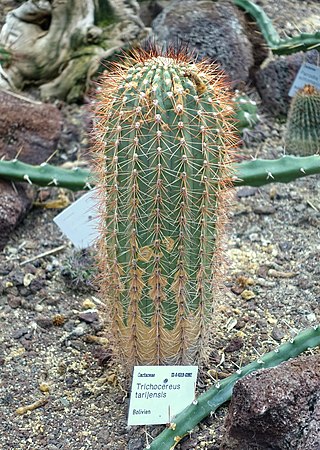
Soehrensia tarijensis, is a species of Soehrensia, in the cactus family. It is native to Bolivia and northwestern Argentina.

Lobivia schieliana, is a species of Lobivia found in Bolivia and Peru.

Echinopsis chrysantha, is a species of Echinopsis found in Argentina.
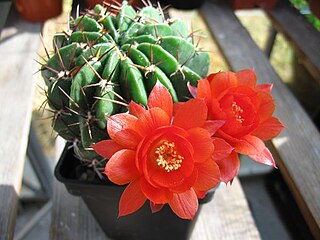
Lobivia maximiliana, is a species of Lobivia found in Bolivia and Peru.

Haageocereus pseudomelanostele is a species of Haageocereus found in Peru

Leucostele deserticola is a species of cactus native to South America.
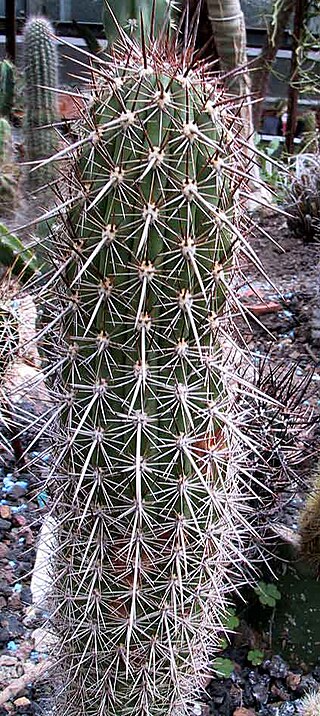
Haageocereus platinospinus is a species of Haageocereus found in Peru.

Echinopsis marsoneri is a species of cactus from Argentina and Bolivia.
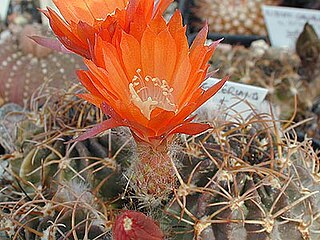
Lobivia tegeleriana is a species of Lobivia found in Peru.
Lobivia pugionacantha, is a species of Lobivia found in Argentina and Bolivia.























